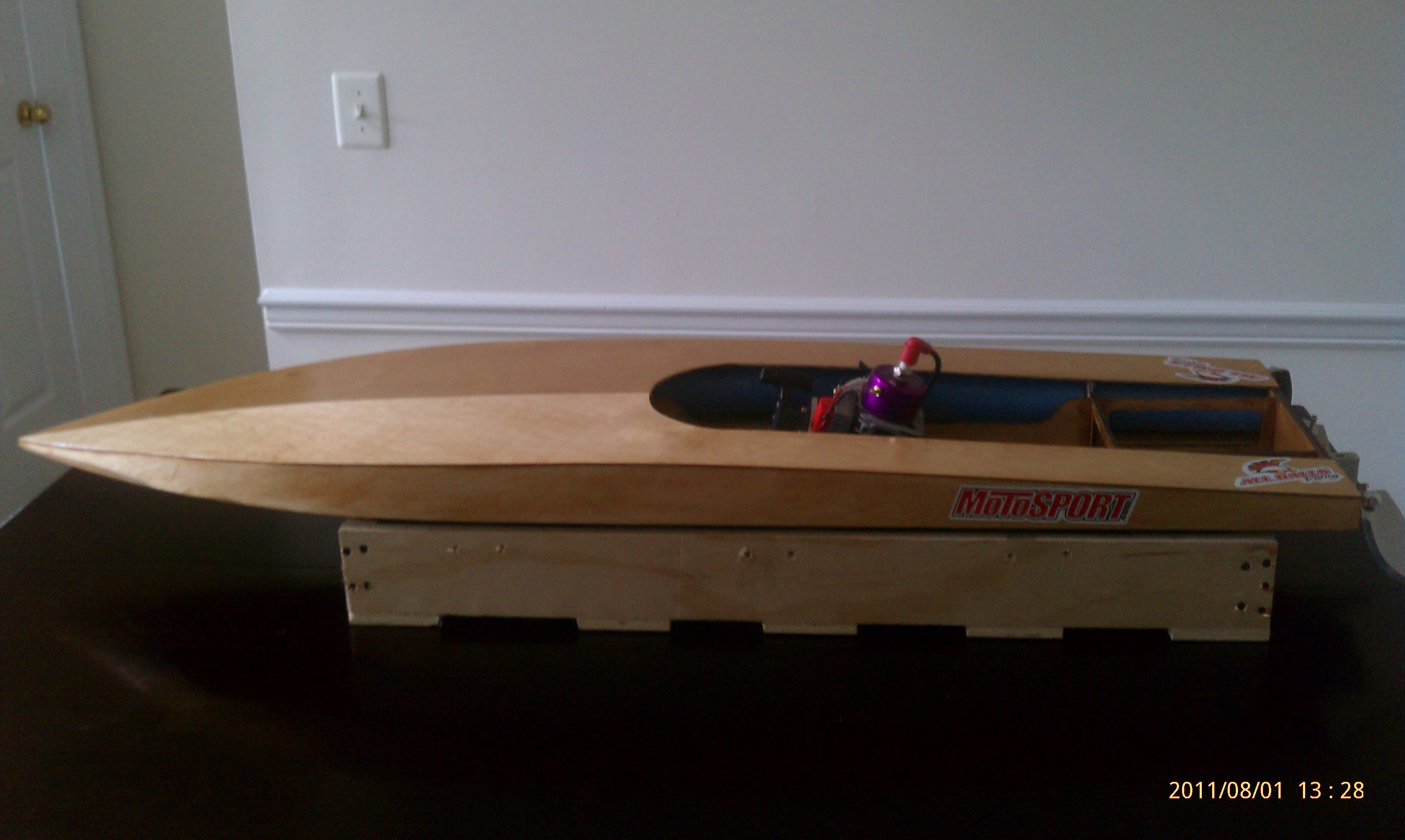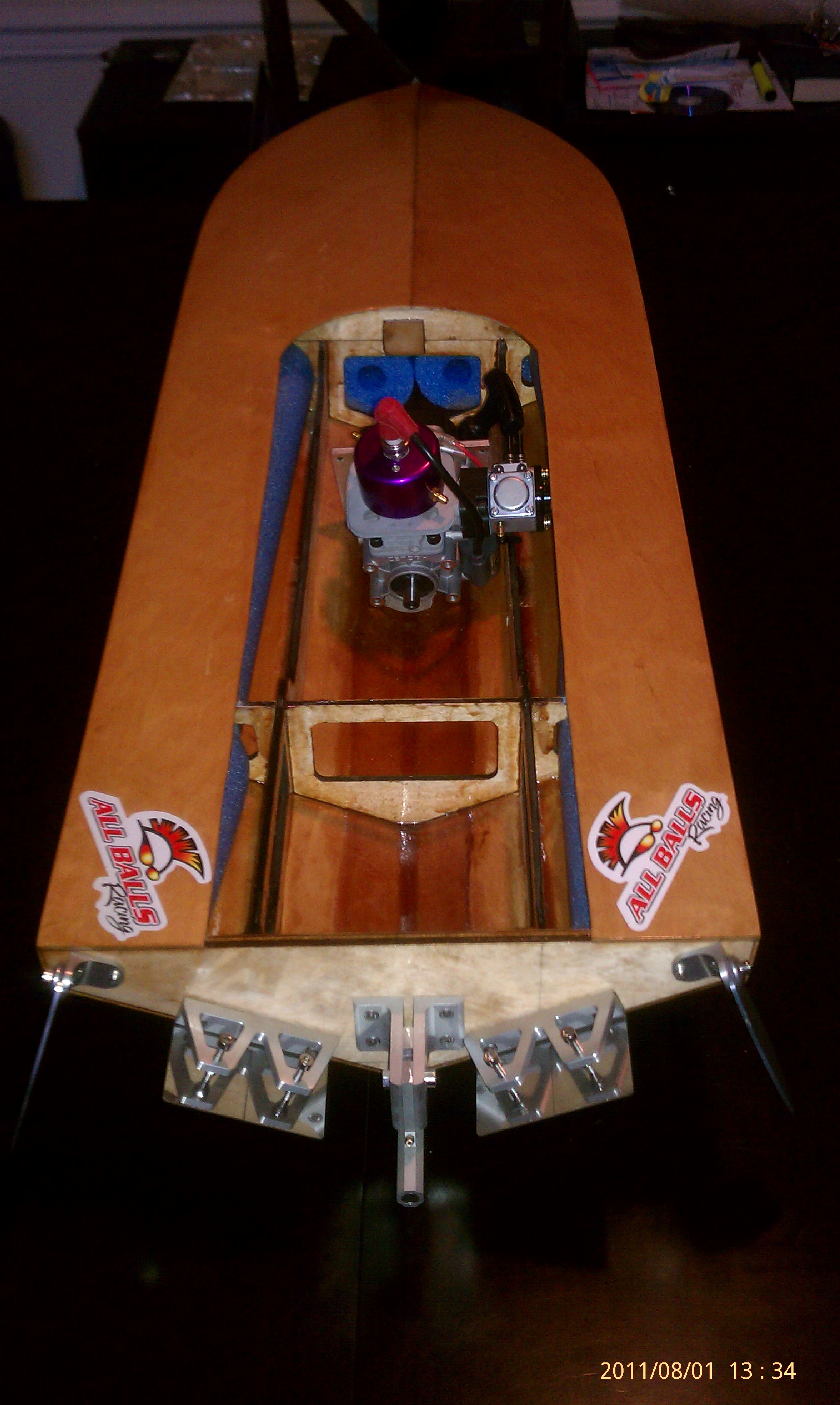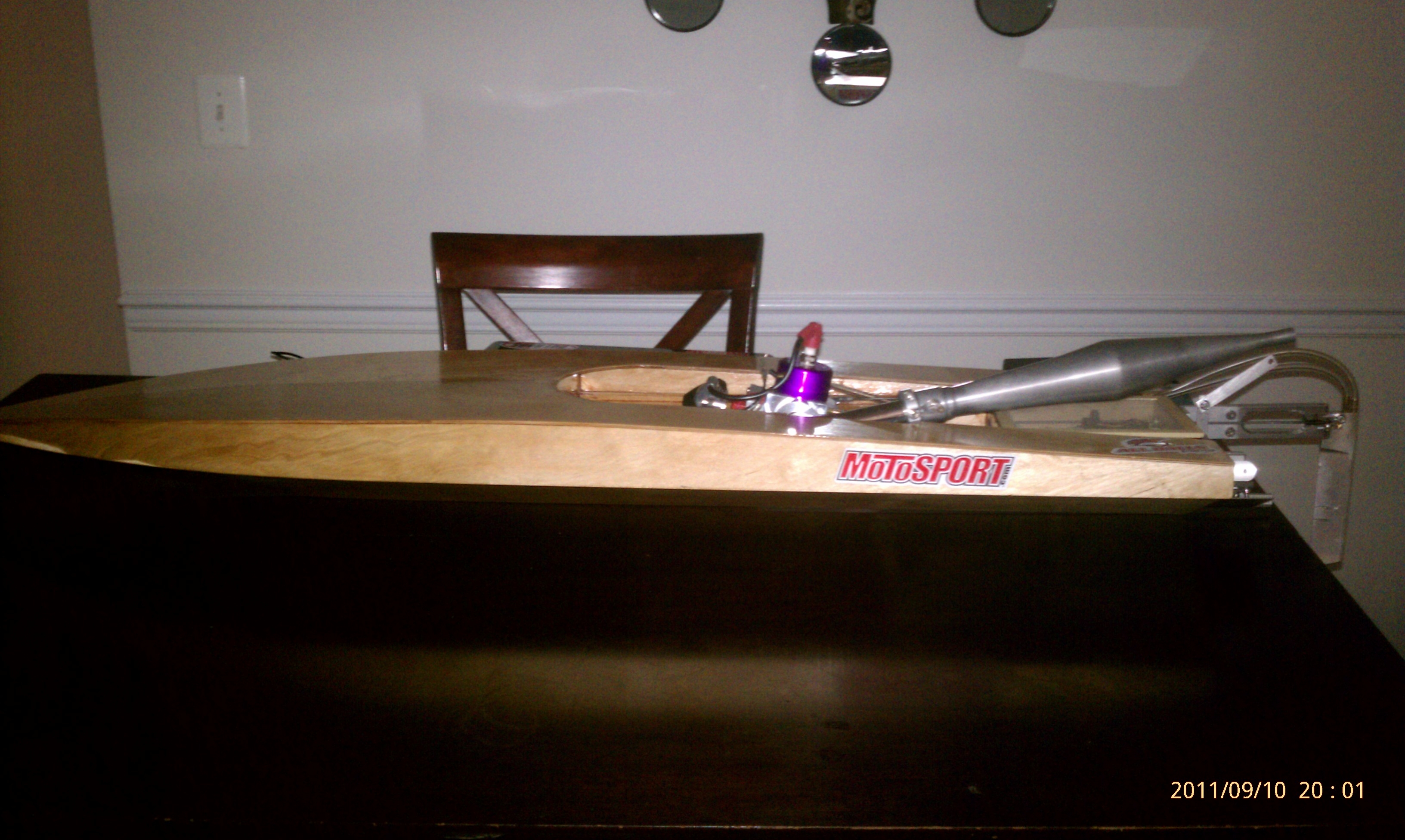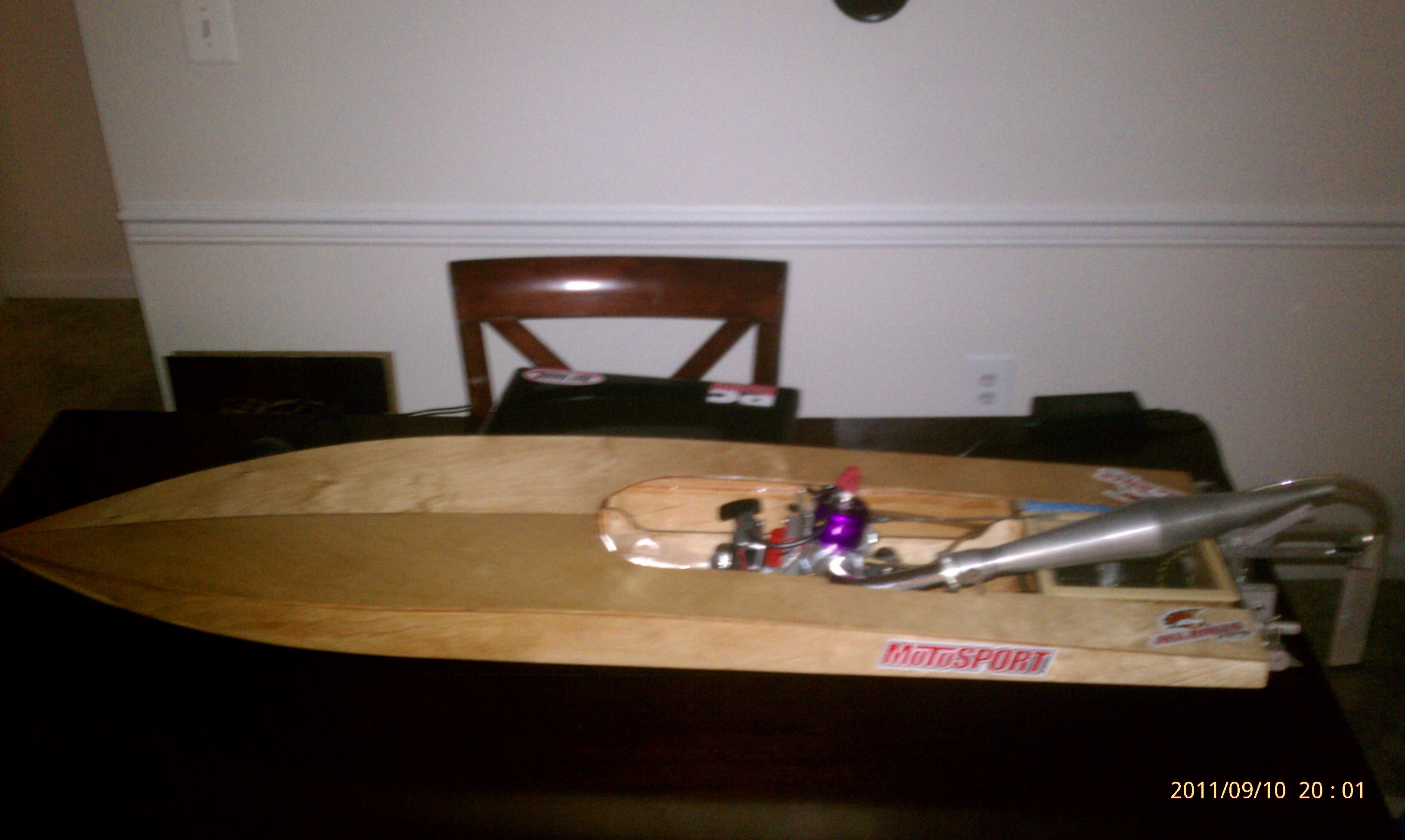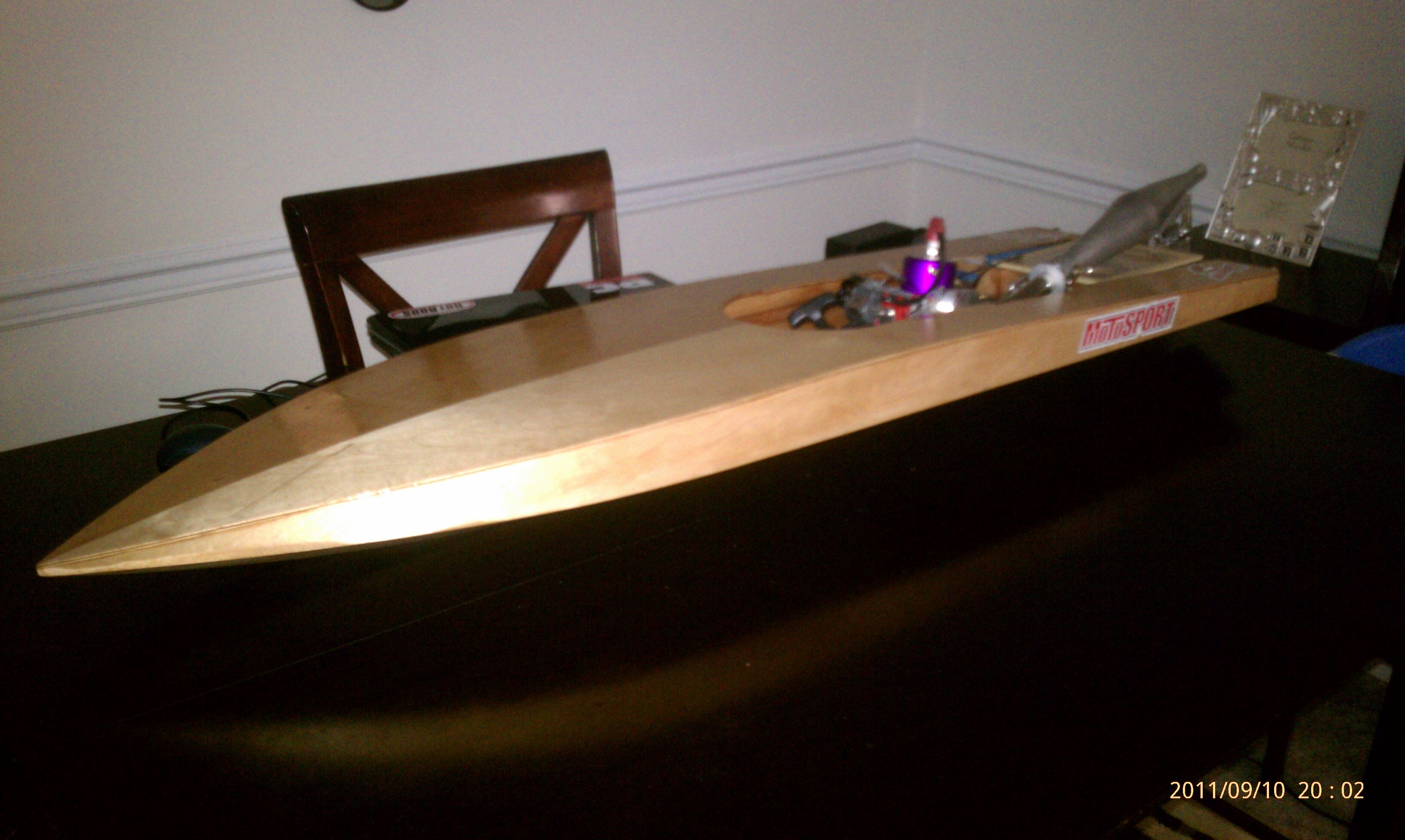My first build on MGB
seanx450 replied the topic: Re: My first build on MGB
So I finally had some time to mount the hardware. I followed Doug's recommendation for mounting the strut and placed the trim tabs and turn fins in the usual places. I received the engine a couple of days ago. As you can see from the photo,I still don't have the engine mounts yet and I need an extension for the rudder before it goes in place. I've ordered a radio box and a couple of fuel bags. Should be here by the end of the week. I'm going to do the radio box before I install the rudder to get a better idea of where to place it. i applied one more coat of epoxy to the hull. It's not as smooth as glass but it's good enough for me. This is going to be a race boat and I expect some rubbing running with beginner boaters and the like. Enjoy!
Sean
Sean
Please Log in or Create an account to join the conversation.
- seanx450
- Offline
- Posts: 30
- Thank you received: 0
seanx450 replied the topic: Re: My first build on MGB
Doug,
Have you ever had the need to install strakes on your hulls? I was wondering how the hull turn's with or without them. Thanks for the input.
Sean
Have you ever had the need to install strakes on your hulls? I was wondering how the hull turn's with or without them. Thanks for the input.
Sean
Please Log in or Create an account to join the conversation.
- seanx450
- Offline
- Posts: 30
- Thank you received: 0
kennyrach replied the topic: Re: My first build on MGB
Very nice build m8
Please Log in or Create an account to join the conversation.
- kennyrach
- Offline
dwr9 replied the topic: Re: My first build on MGB
My boat turns just fine with no strakes. Doug
Please Log in or Create an account to join the conversation.
- dwr9
-

- Offline
- Posts: 80
- Karma: -5
- Thank you received: 4
seanx450 replied the topic: Re: My first build on MGB
That's great news. No need for me to add strakes then. KennyRach, thanks for the compliments.
Sean
Sean
Please Log in or Create an account to join the conversation.
- seanx450
- Offline
- Posts: 30
- Thank you received: 0
kennyrach replied the topic: Re: My first build on MGB
Here something i read year ago and it good info to know .There's a great deal of art that goes into successful chine and spray rail design.
In general, chines shouldn't be more than 3 - 5% of the wl beam. Ideally they should be angled down slightly, but no more than 5 degrees. They should sweep up to the bow, usually exiting the water at around station 4.5.
As fro spary rails, there are a dozen different styles and a thousand different opinions as to which type is best! For higher speeds, it is generally accepted that 3 per side is ideal, with those closest to the chine running all the way aft and the other two somewhat shorter. The one closest to the keel being the shortest.
They are most definitely not simply a means for correcting bad hull design. They are used to reduce wetted surface area - and thus drag - and thus power requirements.Below are a few comments for reference, but I recommend that you do not build anything based on this information without first consulting a professional.
The rule that I use is that chine width should be about 1.5 to 2% of the maximum chine beam, per side. However, I have designed many boats that exceed this value. With wider chines the boat will roll less at idle or rest, and gives added stability at speed, however, the boat will ride a little rougher with wider chines. The chine can be angled down between 0° and 15°. Its all about finding the balance you want for the boat's purpose, and only experience will help you identify exactly what is needed.
Strakes follow similar rules. Boats with a volumetric Froude number less than 4.0 don't need lifting strakes... for example, a 55-foot boat weighing 60,000 pounds should only need strakes if it will go faster than 42 knots. Location and shape, again, is about finding the balance of the design.
In general, chines shouldn't be more than 3 - 5% of the wl beam. Ideally they should be angled down slightly, but no more than 5 degrees. They should sweep up to the bow, usually exiting the water at around station 4.5.
As fro spary rails, there are a dozen different styles and a thousand different opinions as to which type is best! For higher speeds, it is generally accepted that 3 per side is ideal, with those closest to the chine running all the way aft and the other two somewhat shorter. The one closest to the keel being the shortest.
They are most definitely not simply a means for correcting bad hull design. They are used to reduce wetted surface area - and thus drag - and thus power requirements.Below are a few comments for reference, but I recommend that you do not build anything based on this information without first consulting a professional.
The rule that I use is that chine width should be about 1.5 to 2% of the maximum chine beam, per side. However, I have designed many boats that exceed this value. With wider chines the boat will roll less at idle or rest, and gives added stability at speed, however, the boat will ride a little rougher with wider chines. The chine can be angled down between 0° and 15°. Its all about finding the balance you want for the boat's purpose, and only experience will help you identify exactly what is needed.
Strakes follow similar rules. Boats with a volumetric Froude number less than 4.0 don't need lifting strakes... for example, a 55-foot boat weighing 60,000 pounds should only need strakes if it will go faster than 42 knots. Location and shape, again, is about finding the balance of the design.
Last edit: 14 years 4 months ago by kennyrach.
Please Log in or Create an account to join the conversation.
- kennyrach
- Offline
seanx450 replied the topic: Re: My first build on MGB
So I placed an order for a 4" rudder extension for a speedmaster rudder system , radio box accesories consisting of a quarter scale servo and mount, a pipe from HMR, drive collet, engine mounts from Gizmo,fuel line and a couple of 500cc fuel bags. Getting close to completion and firing it up for the first time. I think I'll do the piston mod before I do though. My plans are to prop the boat with an X470 and a 6717/3 to start with. I plan on racing her when she's done although the race season is almost over here in Va. At least she'll be ready for next season and I can focus on another build during the off season. Probably a 1/8 scale Unlimited hydro or gas sport hydro like a Whiplash.
Sean
Sean
Last edit: 14 years 4 months ago by seanx450.
Please Log in or Create an account to join the conversation.
- seanx450
- Offline
- Posts: 30
- Thank you received: 0
seanx450 replied the topic: Re: My first build on MGB
Well it's been over a month since the last time I posted but the Prowler is fully rigged and ready to hit the water for her maiden run. Sometime around the first week of October should be the splash date with the guys from capital RC here in Va. Cant Wait!! 
Please Log in or Create an account to join the conversation.
- seanx450
- Offline
- Posts: 30
- Thank you received: 0
kennyrach replied the topic: Re: My first build on MGB
Wow the boat look super well done ,Now hit the water and send a video
Please Log in or Create an account to join the conversation.
- kennyrach
- Offline
Scott replied the topic: Re: My first build on MGB
Very well done !
You should VERY SERIOUSLY think about installing a muffler on that pipe, you will not be able to race it or run it at approved sites as it is now. Mike Tyson of T-Mod products is the go to guy for a quality bolt on muffler
Contact Mike here: This email address is being protected from spambots. You need JavaScript enabled to view it.
You should VERY SERIOUSLY think about installing a muffler on that pipe, you will not be able to race it or run it at approved sites as it is now. Mike Tyson of T-Mod products is the go to guy for a quality bolt on muffler
Contact Mike here: This email address is being protected from spambots. You need JavaScript enabled to view it.
2 stroke Engine Tech of 30+ years, Prop tweeker, Chronic tinkerholic, Home of Motor Heads RC Racing Engines ...
8 time NAMBA National 6 lap heat racing record holder.
Please Log in or Create an account to join the conversation.
- Scott
- Offline
- Devoted Enthusiast ... MGB Technical advisor
- Posts: 1254
- Karma: 27
- Thank you received: 23
Time to create page: 0.101 seconds

